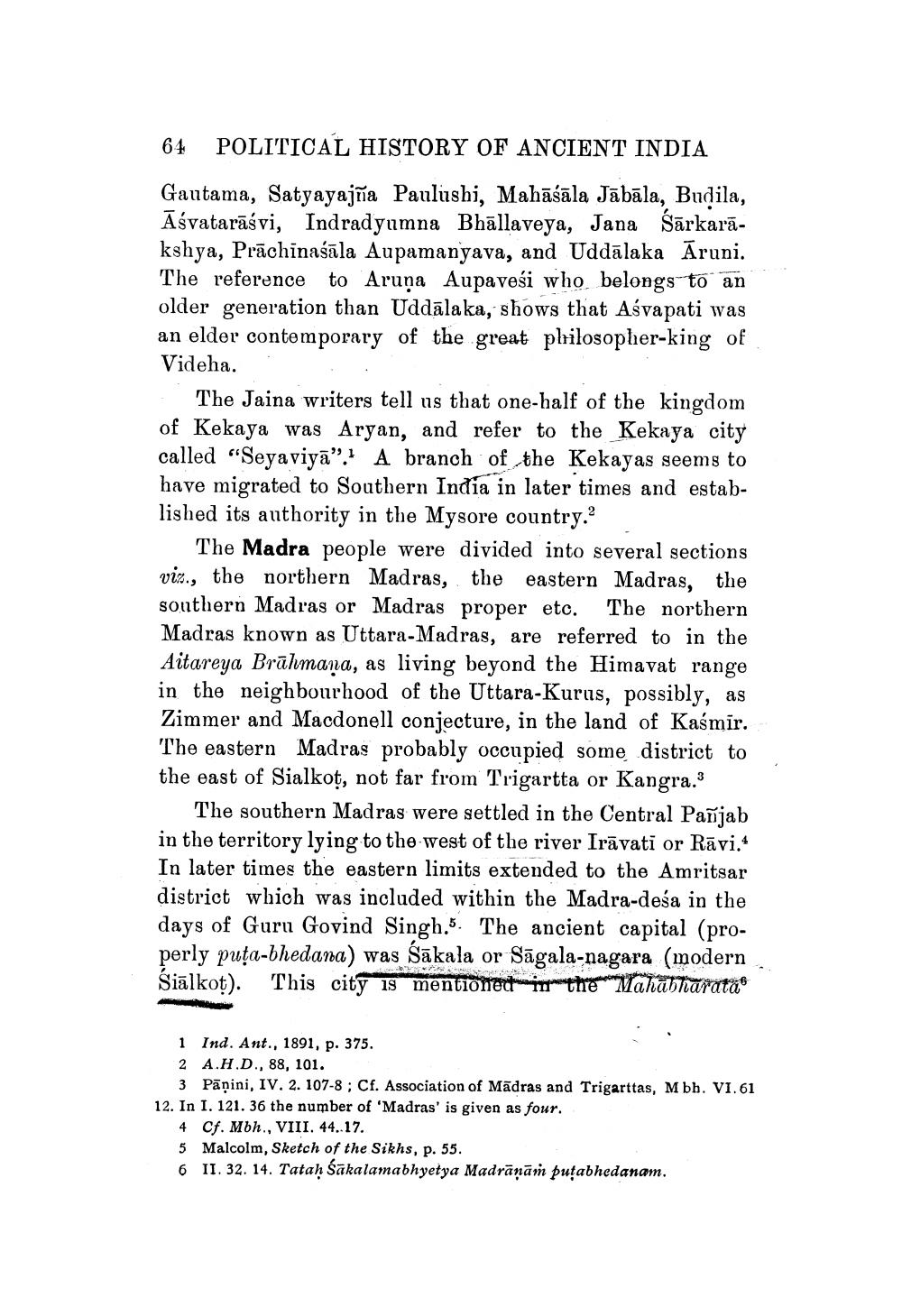________________
64 POLITICAL HISTORY OF ANCIENT INDIA Gautama, Satyayajña Paulushi, Mahāśāla Jābāla, Budila, Āśvatarāśvi, Indradyumna Bhāllaveya, Jana Śārkarākshya, Prāchinaśāla Aupamanyava, and Uddālaka Āruni. The reference to Aruņa Aupavesi who belongs to an older generation than Uddālaka, shows that Aśvapati was an elder contemporary of the great philosopher-king of Videha.
The Jaina writers tell us that one-half of the kingdom of Kekaya was Aryan, and refer to the Kekaya city called "Seyaviyā”. A branch of the Kekayas seems to have migrated to Southern India in later times and established its authority in the Mysore country.
The Madra people were divided into several sections viz., the northern Madras, the eastern Madras, the southern Madras or Madras proper etc. The northern Madras known as Uttara-Madras, are referred to in the Aitareya Brāhmaṇa, as living beyond the Himavat range in the neighbourhood of the Uttara-Kurus, possibly, as Zimmer and Macdonell conjecture, in the land of Kaśmir. The eastern Madras probably occupied some district to the east of Sialkot, not far from Trigartta or Kangra.
The southern Madras were settled in the Central Panjab in the territory lying to the west of the river Irāvati or Rāvi. In later times the eastern limits extended to the Amritsar district which was included within the Madra-deśa in the days of Guru Govind Singh.5. The ancient capital (properly puța-bhedana) was Śākala or Sāgala-nagara (modern Śiālkot). This city 19 mentioned in the Mahabharata
1 Ind. Ant., 1891, p. 375. 2 A.H.D., 88, 101.
3 Pāṇini, IV. 2. 107-8; Cf. Association of Mādras and Trigarttas, Mbh. VI. 61 12. In I. 121. 36 the number of 'Madras' is given as four.
4 Cf. Moh., VIII. 44..17. 5 Malcolm, Sketch of the Sikhs, p. 55. 6 II. 32. 14. Tataḥ Šakalamabhyetya Madrānām putabhedanam.




